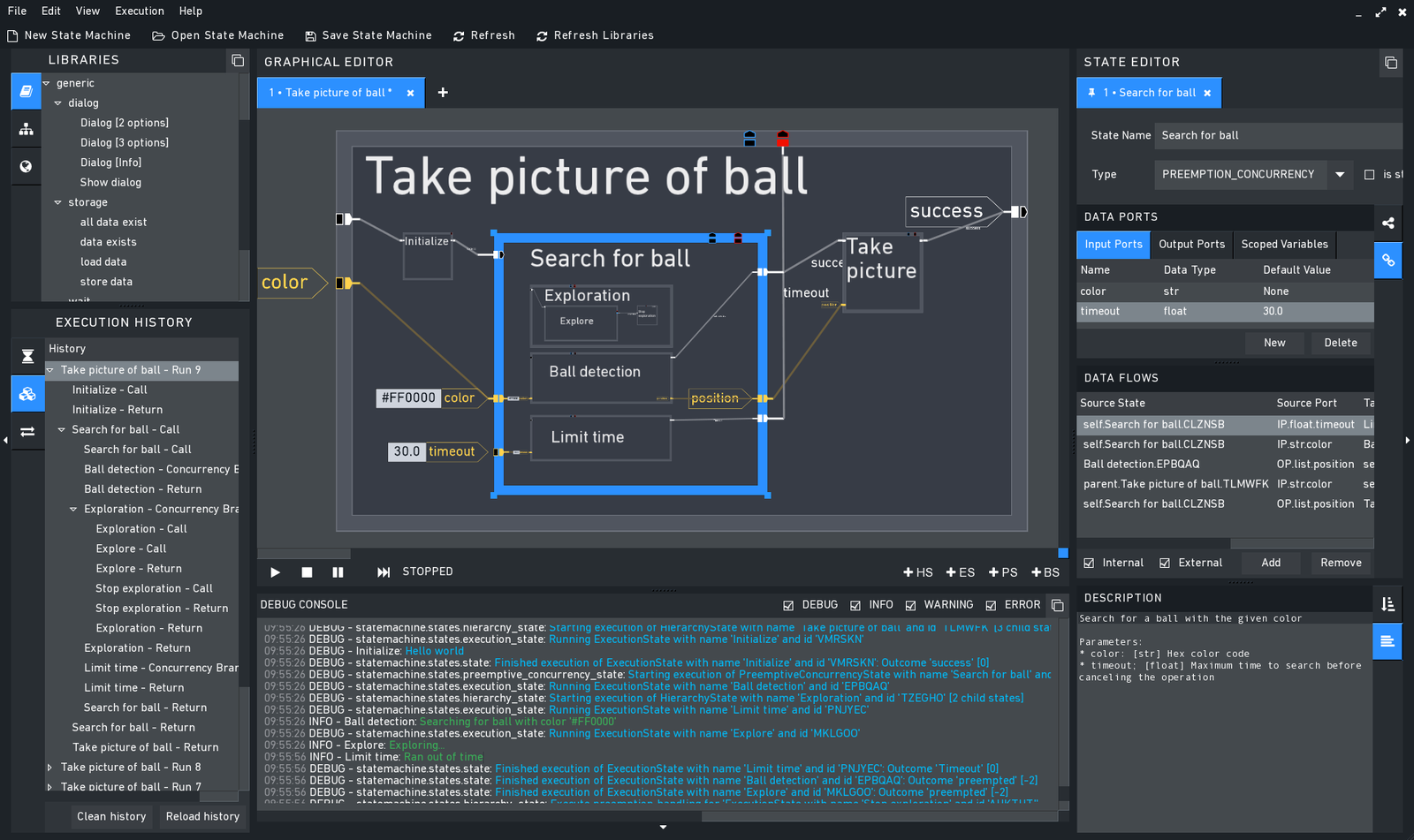Intuitive Programming of Robots
Classic industrial robots are often still programmed using textual languages. This requires experts and takes a long time, which is why the resulting high costs are only profitable for large quantities. To drive forward automation, it therefore makes sense to simplify the programming of robots to such an extent that even laypeople are able to program robots. The programming time should also be significantly reduced.

To this end, new programming concepts are being developed that have a high degree of usability. This means that ergonomic aspects such as intuitiveness are taken into account right from the start. These concepts, which are developed for both lay people and experts, are evaluated with user studies and continuously improved.
An example of a software tool that supports experts in programming autonomous robot programs and robot skills is RAFCON. The program flow is described here using hierarchical state machines. Data flows are also modeled and parallel processes can be defined. The graphical editor is to be emphasized, which is operated like a digital map, in which one can zoom in and out, as well as pan.
An example of a programming concept for lay people is called "Task-Level Programming by Demonstration" (TLPbD). The core idea here is that the human shows the robot a task by hand-guiding and demonstrating it, and the system automatically recognizes which robot skills with which parameters are necessary to imitate the task. The system thus recognizes the human's intention and can achieve it with the appropriate skills of the robot.
